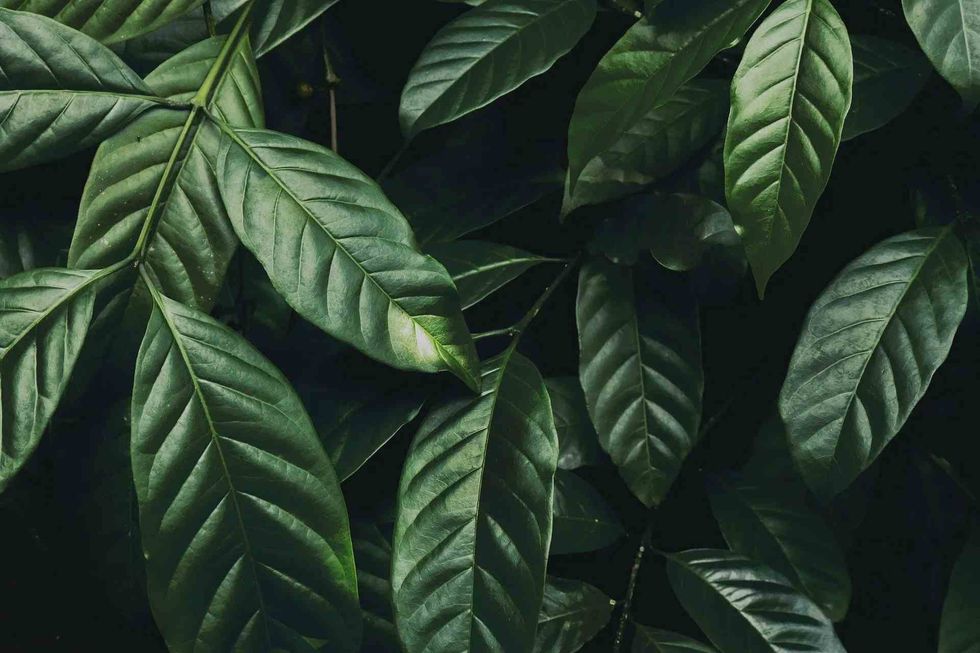Did you know that leaves can breathe and are known as the 'kitchen of the plant'?
A leaf has minute pores on its surface that contain stomata required for breathing. Leaves are known as the 'kitchen of the plant' because it prepares food for the entire plant.
Leaves are indispensable for the survival and growth of other forms of life prevailing on Earth. They are known as the producers of the food chain; that is, they are the primary source of food for most living things on Earth.
As a result, they are placed at the beginning of the food chain, followed by the other consumers (animals and humans). They cater to the most basic needs of the plants, thereby establishing ways for them to interact with the environment.
In particular, green leaves of plants have the most important function of aiding the plants in respiration and preparing food for them besides providing food and shelter to several wild animals.
It is extremely important for more and more plants to grow as they are responsible for the exchange of gases, carbon dioxide, oxygen, and water in the environment that is necessary for all living beings to survive.
Keep reading to discover more about what leaves do! If you like this article, don't forget to check out why do leaves fall and why do tomato leaves curl to learn interesting facts about them.
The Process That Leaves Do
A leaf is responsible for carrying out the most important processes that trees are obliged by for their survival. The two most important processes are photosynthesis and the exchange of gases.
Photosynthesis of a plant is the process by which a leaf synthesizes food for the entire plant with the help of sunlight, water, nutrients, and air.
While the leaf performs photosynthesis, the exchange of gases carbon dioxide, water vapor, and oxygen take place simultaneously, which propels the cycle of these gases in the environment. Let's read about these two processes in detail.
Simply put, photosynthesis is the process of synthesizing light energy into chemicals that are consumed by the plant. The most important elements that are required by the leaves to carry out the process called photosynthesis are sunlight, water, nutrients, and air.
Leaves are found in various sizes and shapes. The sizes and shapes of a leaf are adapted to the surrounding conditions. It is made sure that an adequate portion of the leaf is exposed to the environment to maximize photosynthesis.
A leaf also contains a substance called chlorophyll that is necessary for it to synthesize food. Chlorophyll is made up of carbon and nitrogen molecules that bring the green color to leaves.
During photosynthesis, carbon dioxide and water from air and soil, respectively, are absorbed by the leaves. Next, the leaves, with the help of chlorophyll, turn the carbon dioxide into simple sugars (glucose) and water into oxygen.
Finally, the sugars are stored as energy for the plant while oxygen is released into the environment. This oxygen, in turn, is inhaled by the other living beings to survive.
Transpiration is another important procedure performed by the leaves where water vapor is released from the leaves. This procedure involves the release of water vapor from the leaves.
Stomata (cell structures) are found on the leaf surface that has respiratory openings under them that are surrounded by guard cells. These openings work according to the amount of sugar that each guard cell contains.
Water and water vapor are released through these pores, conditioning the plants to survive the surrounding temperature. The secretion of water droplets from the leaf pores is known as guttation.
Tasks That Leaves Do
The characteristic features of a leaf determine the kind of task that it can perform. The sizes, shapes, and thickness of different species of leaves vary according to the environment that they are found.
It helps them to maximize the rate of photosynthesis which in turn influences the longevity of the trees. It also regulates the amount of water vapor and water that is released from the leaves.
For instance, evergreen and/or deciduous trees generally have broad, flat leaves with a wide surface to release excess water vapor and oxygen.
On the contrary, the surface area of leaves of trees found in deserts and extremely cold regions is considerably smaller in size and breadth to minimize water loss. Read on to learn about the structure of a leaf and the various tasks performed by it.
As we now know, leaves are responsible for photosynthesizing light energy into the food that is consumed by the plant. They also perform processes such as respiration, transpiration, and guttation for the survival of the plant. Vascular leaves are bestowed with several special features that aid them in performing these tasks.
To begin with, the leaf blade or lamina is the widest part of the leaf where numerous vein networks are present. The chlorophyll-filled lamina is necessary for absorbing light from the sun required to perform photosynthesis.
Its outer surface is filled with small pores called stomata (cells) which are responsible for the exchange of gases and the release of excess water.
The vein network present on the leaf blade is called a venation pattern that can be of two types- a parallel venation pattern is found on monocot leaves while dicots have reticulate venation (network-like pattern). These veins help in the transportation of food, energy, water, and nutrients from the roots to the other parts of the plant.
The main vein or the midrib passes through the center of the leaf while a petiole (leaf stalk) attaches a leaf to the plant stem. They hold the leaf in place and protect it from severe conditions.
The blade of simple leaves may or may not be divided; a banana leaf blade has several dissections, while a maple leaf has separate lobes that lay away from the midrib. The margin is referred to the surrounding edge of the leaf.
Steps That Leaves Do
The processes performed by a leaf require several steps that must be followed to reach the end results. These steps are followed one after the other in a systematic way to fulfill each of the processes successfully.
The different parts of a leaf work in sync and bring the changes that can be observed after the successful completion of the steps. It is important to know about these steps to understand the process completely. So, without much delay, let's go through the steps in detail.
The roots of plants extract water and important nutrients from the ground and send them to the leaves through the petiole (leaf stalk) and then the midrib. The leaf requires these along with other elements to prepare the energy for the plants.
The leaf blade absorbs sunlight and stores it in chloroplasts while the stomata take in carbon dioxide from the air.
Chloroplasts contain leaf pigments called Chlorophyll and are the reason behind a green-colored leaf which is necessary to perform photosynthesis. Once all the required elements reach the leaf, oxidation of water and reduction of carbon dioxide is carried out within the leaf cells.
This means that water loses electrons to transform into oxygen while electrons are gained by carbon dioxide, transforming it into glucose.
Next, the oxygen is released into the environment through the stomata for other living beings to breathe while the glucose molecules are stored as energy within the leaf cells. The openings under each stoma also help in plant respiration transpiration and wherein gases such as carbon dioxide, oxygen, and water vapor are either released or taken in.
Apart from these, leaves adapt to their surroundings in order to support the plant's survival. Leaf modifications in various plant species have enabled it to capture insects like the Venus flytrap. The cactus has hollow leaves, necessary to conserve water in a desert, while many temperate plants' leaves are bud scales that protect the plant from animals.
Scientific Work That Leaves Do
Leaves perform various scientific processes, and the knowledge of such will leave you stunned! A leaf contains chemical substances and biological structures that are suitable for carrying out these scientific processes. Here are two scientific tasks that a leaf performs.
First, plants do not eat food but perform a scientific task called photosynthesis by transforming sunlight into glucose which helps a plant stay healthy. And here goes the second one- ever wondered why the leaves change colors during fall? Well, it happens because of the chemicals that are present in them.
As we know, a leaf contains chlorophyll which renders it a green color. This color remains from the beginning of spring until the end of summer. With the onset of autumn (fall), the leaf stops photosynthesizing due to the changes in the length of the day. It does not get enough light which results in the breakdown of chlorophyll.
Consequently, the green color vanishes, making the yellow-red or orange colors visible as a signifier of the fall. The yellow leaves fall throughout the winter until spring arrives when new branches and green leaves grow on the plants again.
Here at Kidadl, we have carefully created lots of interesting family-friendly facts for everyone to enjoy! If you liked our suggestions for what do leaves do, then why not take a look at where do bay leaves come from or why do leaves change color?








